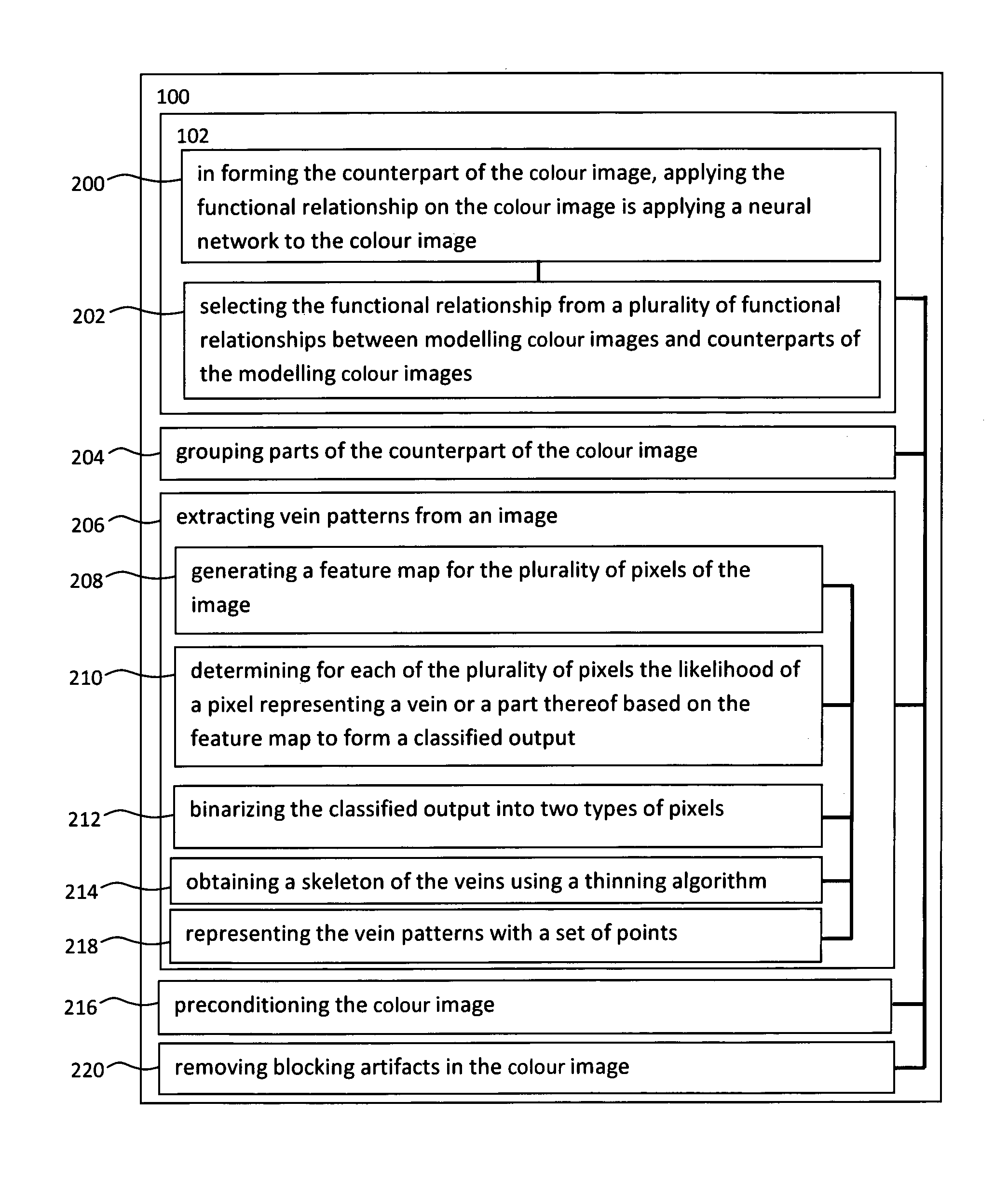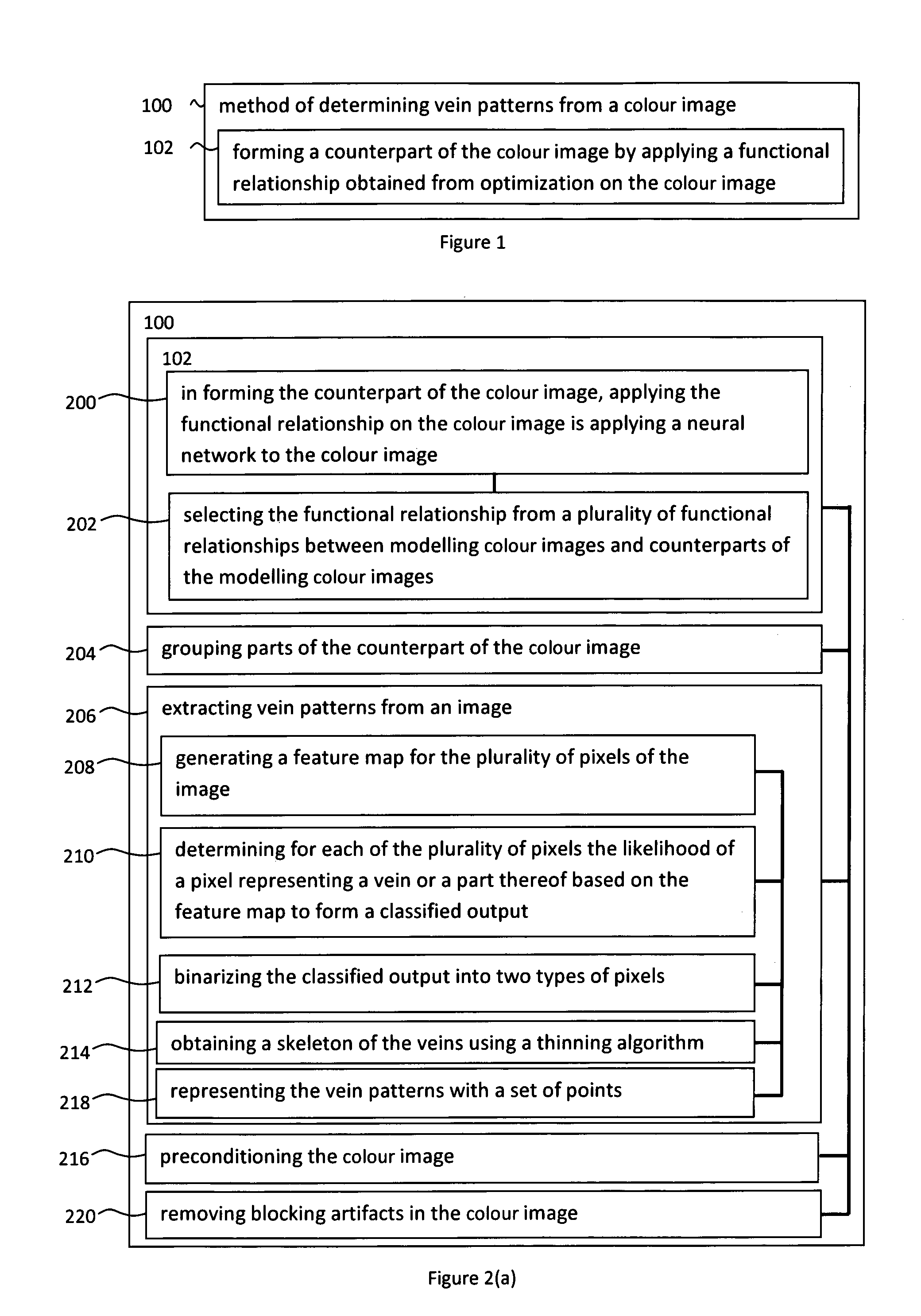Method and an apparatus for determining vein patterns from a colour image
a colour image and vein pattern technology, applied in image enhancement, angiography, instruments, etc., can solve the problems of criminal offense of child pornography, inability to apply biometric traits to legal cases, and difficulty in using these images,
- Summary
- Abstract
- Description
- Claims
- Application Information
AI Technical Summary
Benefits of technology
Problems solved by technology
Method used
Image
Examples
example 1
Using a Knowledge-Based Approach to Remove Blocking Artifacts in Skin Images
[0139]Using biometric traits from the skin for criminal and victim identification highly depends on the quality of evidence images, because the size of these traits in the images is usually very small. Digital images, taken by consumer cameras, are more than often compressed by the JPEG algorithm. Blocking artifact is a problem caused by this algorithm. As a result of the compressed image, vein patterns may be broken, and skin marks may be blurred or even totally removed, especially under high compression ratios.
[0140]FIG. 6 illustrates examples of the effects of blocking artifacts on pigmented skin marks and vein patterns. FIG. 6(a) shows an uncompressed digital image, for example a colour image, with a common nevus, as indicated within a circle 600 and FIG. 6(c) shows the V component of the YUV space with a clear vein pattern, wherein the V component is used in the JPEG algorithm to transform an image from...
example 2
[0185]Extracting veins from colour images is a very challenging task because the vein patterns are hidden under the skin and nearly invisible. Skin is an intricate layered material whose internal structures vary with individuals, body sites, and time. Additionally, the physical process of image formation may complicate the situation. When the light from an illumination source hits the skin, some light is absorbed while some light is reflected and captured by the sensor in a camera. The characteristics of the illuminant and the camera also play a significant role on the skin color formation in an image. There is no algorithm or software package especially designed for this purpose, except for various embodiments of this invention. FIGS. 26(a) and 26(c) show an example of digital photographic images (in colour). FIGS. 26(b) and 26(d) show the respective output obtained from various embodiments of this invention without parameter range optimization through colo...
example 3
[0269]A vein extraction algorithm may be applied to both IR images and the distribution maps (or uncovered vein patterns) obtained from the vein uncovering algorithm in accordance with various embodiments of the invention and of Example 2.
Vein Extraction Algorithm Involving Response Map, Orientation Map, and Scale Map
[0270]In an example, a schematic diagram of the vein extraction algorithm as shown in FIG. 40 was provided.
[0271]The vein extraction algorithm was applied to IR images 4000, which were captured in a controlled environment. IR has good penetration capability and users are able to cooperate with a full body scanner. The IR images showed relatively clear vein patterns. First, a set of multi-scale and directional filters was applied to the IR images. A zero-DC (direct current) Gabor filter made a good and suitable choice, because its feature extraction capability was demonstrated in many recognition systems, for example, in iris and palmprint identi...
PUM
 Login to View More
Login to View More Abstract
Description
Claims
Application Information
 Login to View More
Login to View More - R&D
- Intellectual Property
- Life Sciences
- Materials
- Tech Scout
- Unparalleled Data Quality
- Higher Quality Content
- 60% Fewer Hallucinations
Browse by: Latest US Patents, China's latest patents, Technical Efficacy Thesaurus, Application Domain, Technology Topic, Popular Technical Reports.
© 2025 PatSnap. All rights reserved.Legal|Privacy policy|Modern Slavery Act Transparency Statement|Sitemap|About US| Contact US: help@patsnap.com



